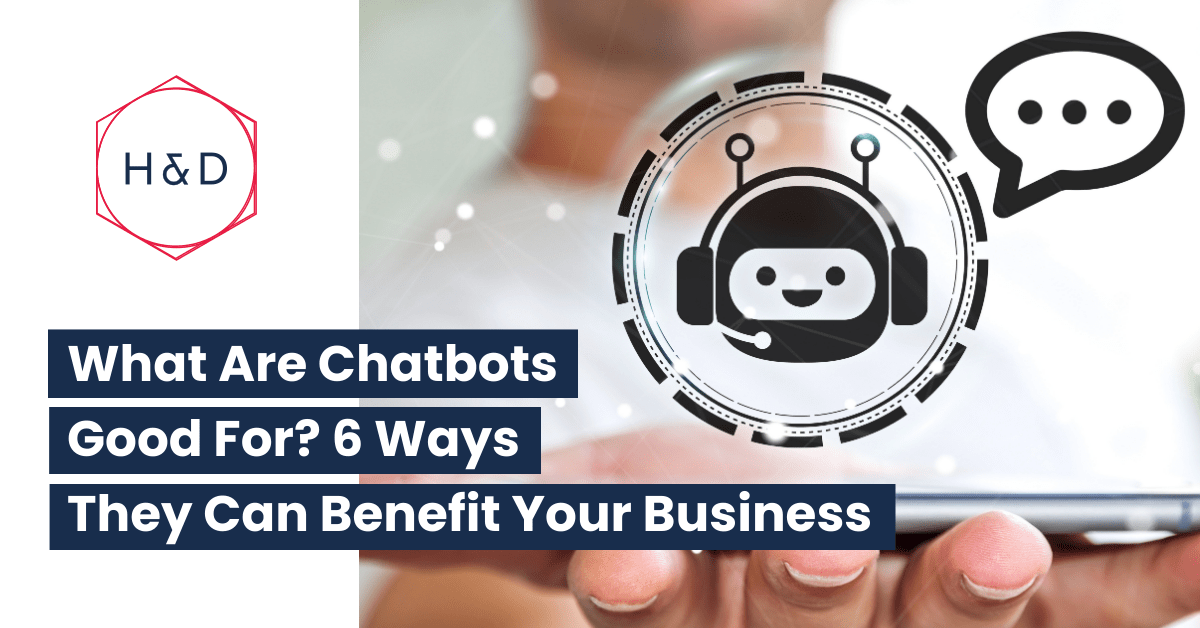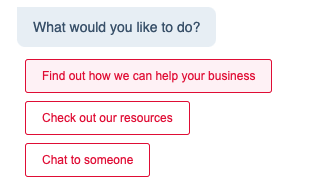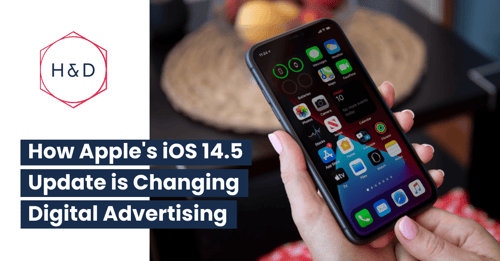
Before taking on the task of writing this blog, being the dutiful marketer that I am, I did a bit of keyword research around what people are searching for when it comes to chatbots. Initially, I was a bit stunned to see that there is a decent amount of traffic around the term “what are chatbots good for”. After giving it a lot of thought, the value of this question jumped out at me.
In my experience, chatbots have a bit of a bad rap, and for good reason too. The fact of the matter is that if you’ve had a poor experience with a chatbot, the memory of that will last longer than a good experience. My biggest learning from building chatbots for a pretty long list of clients is that the best chatbot experience for users is when they don’t even remember using them.
Have you ever used a chatbot that took you down a rabbit warren of questions and options, for you to be presented with irrelevant information, get no answer to your question and lose a few minutes of your life that you can NEVER get back? It’s not a good feeling for the user, and it’s not a good look for your business – especially if this is the first time they have engaged with you.

HubSpot has provided some really clever chat & chatbot solutions that can integrate seamlessly into the other marketing automation tools and smarts on the platform. Check out the list of actions that HubSpot’s chatbots can do – it’s pretty impressive.
The 3 non-negotiables of chatbots
It doesn't matter how clever the AI or the chatbot is, or how cute and friendly its language is. If the three non-negotiables aren’t met, then you should be questioning if you should even have a chatbot – or at least look at what you can do to fix what you’ve got.
A chatbot must:
1. Provide the information that users are looking for, quickly
2. Answer questions
3. Make users feel as though they’re being looked after.
Be strict on yourself with this one. Don’t feel as though you should have a chatbot for the sake of having one. But as long as these 3 non-negotiables are met, you’re on the right track.
So back to the point of the blog, what ARE chatbots good for?
1. Chatbots are available 24/7.
You may have heard the term ‘On Demand Economy’ – in essence, we know that people aren’t visiting your website between 8am and 5pm. Have you ever had a burning question about a product or service, but it only comes to you in that moment just after you’ve brushed your teeth and you’re about to head to bed? You go into the website, but the information that you are looking for isn’t jumping out on the page. A friendly chatbot appears in the corner of the page, letting you know that it’s there if you need it.
If it can direct you to the information that you’re looking for, you’re happy. I think it’s safe to say that you might even be a little bit impressed with your experience. You’ve developed a layer of trust with the business.
Job done, chatbot!
2. They can make things easier for you.
It’s true. If your website users are submitting the same questions via email or submissions in your enquiries form, then this is the most obvious job that a chatbot can do for you. The less time you spend answering simple questions over email, a support inbox or phone the better, right? Now that’s just the support side of things... They can make things easier for your sales team too; but we’ll get to that a bit later.
3. They can make things easier for your users.
People don’t have time. When users come to your website, they want to find the information that they are looking for quickly - and we know that they don’t necessarily want it between 9am - 5pm, Monday to Friday. When users get what they want, they will instantly build trust in your business, and the likelihood of them to build a relationship with you is greater.
Chatbots can do this. If you have a good idea of:
- What information your users are looking for
- The questions your users are asking
- The most enticing offers or content
The hard work has already been done. Now all you need to do is present this in a chatbot in a way that makes sense.
4. Chatbots can generate leads.
In this respect, think of chatbots as forms with personality. Now think of how a chatbot can move users through the buyer's journey. How do we do this? It’s simple. We’re not reinventing the wheel, here…
Step 1: Review what triggers marketing qualified leads in your existing HubSpot set up. It could be as simple as signing up to an offer that your chatbot presents, such as requesting a guide or a white paper. You can replicate existing processes and actions in the chatbot, but as mentioned, in a more personal way.
Step 2: Now review what triggers sales qualified leads (that’s what we’re really here for, right?). It could be as simple as this:
Your user clicks on “Find out how we can help your business”.

From here, the chatbot asks the user to enter exactly what their business needs help with.
It then collects the user’s name, email address and company name.
The chatbot then asks if the user would like us to call them back, or book a meeting with the sales team. Once these actions have been completed, bingo - you’ve got yourself a SQL, and your sales team will be sent all of the important information required to make that sales call or meeting, all in 30 seconds.
Check out Nick-o's Blog which has some cool tips and insights on how chat & chatbots can work in the B2B space.
5. They answer questions.
It’s true. If your website users are submitting the same questions via email or submissions in your enquiries form, then this is the most obvious job that a chatbot can do for you. It’s a good idea to collate the most frequently asked questions, and get the chatbot to offer the answers to them.
If you have any existing HubSpot Knowledge base, users can even ask the chatbot open questions, and any relevant articles in the Knowledge Base will be offered up.
6. They can provide enriched support.
It's a common misconception that a support element in a chatbot depends on the ability to connect through to a real person via live chat. Let's make one thing clear, if your business can support this, then do it. At the end of the day, chatting to a real life expert can’t be beat. But it’s important to get all of the relevant information from the user first before getting to the stage of chatting with an agent. This ensures that:
- The agent knows exactly what they are dealing with, so will be able to assist faster
- The user doesn’t have to repeat themselves!
Realistically, live chat may not always be an option - you may only have staff available for live chat during business hours, but never fear. There’s always the ability for the chatbot to:
- Raise a ticket - provide all of the information that’s required to provide the relevant support, and clear expectations on when the right person will be able to help
- Request a return email or phone call
- Raise a task
NB: It’s really important to set the expectation around when their request will be actioned. Treat these as you would any service level agreement that you may have with your clients, customers or users.
Would you like to see a chatbot demo in action? Click here and have a play! Otherwise, if you'd like to book in a chat about chatbots with me - click here.




